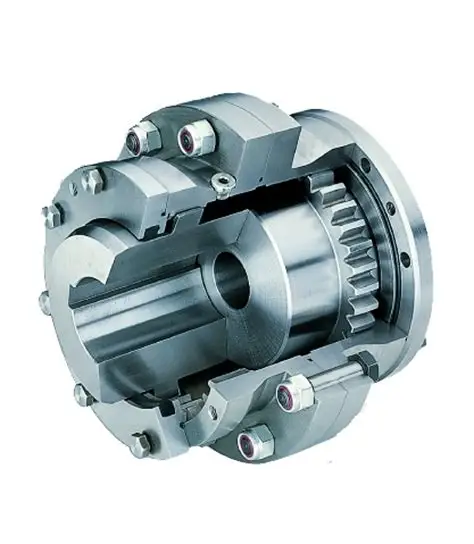GEAR COUPLING
Gear couplings are torsionally rigid and are provided to two styles â completely versatile and versatile/rigid. A totally flexible coupling comprises two hubs with an external equipment and two outer sleeves with an inside equipment. It really is a common coupling for all kinds of purposes and accommodates all feasible misalignments (angular, offset and blended) as nicely as big axial moments. Devices, bearings, seals, and shafts are consequently not subjected to the added forces, at times of appreciable magnitude, which crop up from unavoidable misalignment normally associated with rigid shaft couplings.
A versatile/rigid coupling includes one particular adaptable geared 50 % and 1 rigid half. It does not accommodate parallel displacement of shafts but does accommodate angular misalignment. This sort of couplings are largely employed for “floating shaft” apps.
Sizes 010 â 070 all have crowned teeth with a 20° strain make contact with (fig one). This allows to accommodate up to one,5° static angular misalignment per gear mesh. Nevertheless, reducing the operational misalignment will increase the life of the coupling as nicely as the existence of other equipment elements these kinds of as bearings and so on.
Gear COUPLING equipment coupling is a torsionally rigid grease crammed coupling consisting of two hubs with exterior multicrown – and two flanged sleeves with straight inside tooth. The flanged sleeves are bolted with each other with high power corrosion secured fitted bolts and nuts. The sleeve is at the opposite aspect of the flange executed with an endcap (inside for tiny and screwed for large dimensions couplings) in which the o-ring is situated for sealing purposes. The equipment coupling has been created to transmit the torque in between these two flanges by way of friction steering clear of fretting corrosion in between these faces.
equipment coupling is a torsionally rigid grease crammed coupling consisting of two hubs with exterior multicrown – and two flanged sleeves with straight inside tooth. The flanged sleeves are bolted with each other with high power corrosion secured fitted bolts and nuts. The sleeve is at the opposite aspect of the flange executed with an endcap (inside for tiny and screwed for large dimensions couplings) in which the o-ring is situated for sealing purposes. The equipment coupling has been created to transmit the torque in between these two flanges by way of friction steering clear of fretting corrosion in between these faces.
The teeth of hub and sleeve are constantly in speak to with every other and have been designed with the essential backlash to accommodate angular-, parallel- and axial misalignment inside of their misalignment ability. The angular and parallel misalignment capability is identified by the gear tooth design and is for the common equipment max. 1.5° levels (two x .75°) in complete. The axial misalignment ability is minimal by the equipment tooth size in the sleeve and can be varied (optionally).
To locate extra details on CHINA GEAR COUPLING see our internet site.